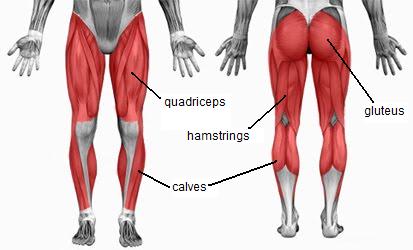Laurie's Blogs.
May 2017
Post-Op ACL - Quads versus Hams Ratio

This blog was inspired by a Mike Reinold Podcast: https://mikereinold.com/quadriceps-to-hamstring-ratio-in-acl-injuries-phds-and-passing-the-pt-boards/
BTW his stuff is great! Yes, it’s all ‘human’, but the veterinary / animal rehab side of things has so much to learn from the human side. Anyways, the discussion was about ‘the optimal’ quads-hams ratio that you would aim for in ACL rehabilitation.
Firstly, what is interesting to note, is that PTs / Physios will tend to default back to what they learned first… and if that isn’t altered with new or up and coming research, then we tend to get stuck in our ways. (All professionals do it! That’s why continuing education is so important!) Okay, so back when I was a newer graduate, I was taught that hamstrings were so important. They were the protectors of the cruciate. They assisted in preventing anterior translation of the tibia. We were also taught to be careful with the quads… they caused anterior translation of the tibia. Biomechanics… right? Not so simple.
What do we know? We know that the Quads are big power muscles. You will never get hamstrings to be stronger than quads (as least not in people, and not in most dogs either… maybe you could in a racing greyhound! Bazinga! Now THEY have hamstrings!!!) We also know that quadriceps strength is inhibited with knee pain / knee swelling. So, we’d be fools to not try to gain quad strength!
In current human PT practice, we are looking to engage the quads early on in rehab. But once we get into advance stages of rehab, then we need to engage ‘the posterior chain’ and engage the hamstrings (and glutes) to optimize the ratio. What should the ratio be? We don’t really know! We just know that the quads will always be stronger. They’ll never be equal! And… just when it is starting to sound simple (Quads first, Hams second…), we’ll go back around to saying that those quads need to be super strong, and super strong eccentrically when the patient is ready to be discharged from rehab.
Additionally, it’s also helpful to know that from a ‘preventative’ standpoint, PTs and Athletic Trainers are trying to coach athletes to land in a more flexed-knee forward-lean posture, so that hamstrings are better engaged and protecting the ACL. Is there a way to prevent cruciate tears in dogs? Possibly! They need lots of coordination & proprioceptive training – some stable, and some dynamic. We can work on hamstrings using backwards walking on a treadmill (my favourite), I also like tug of war (especially if you let the dog pull you and ‘win’ the war a little bit). As well, we mustn’t forget about the glutes! Glutes stabilize the hip which allows the knee to be stabilized as well.
Okay, so this blog was primarily concept based, not ‘how to’… but as I like to do in my ‘live’ teaching, I want to teach you how to think, how to problem solve, and not just follow a recipe!
There you go! Happy Quad & Hamming!
Cheers! Laurie


